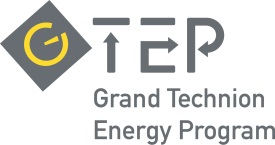You are cordially invited to participate in the “Recent Advances in Computational Modeling for Energy Applications”, which strives to start a tradition of the meetings that brings together computational modeling scientists from academia and research centers.
“Recent Advances in Computational Modeling for Energy Applications”, Tuesday, July 7 2015
David Wang Auditorium, 3rd floor of Dalia Meidan Building at the Materials Science & Engineering Department, Technion, Haifa
Computational research offers a wide range of opportunities for science and engineering. Especially in the energy arena there is a need for understanding how material composition and structure control energy conversion, and for designing materials that could improve conversion efficiency. However, the combination of several modeling strategies is necessary for capturing different length and timescales, which best describe complex energy conversion applications. We hope that this conference will be a platform for collaboration among theoreticians specializing in complementary methods.
The conference program will focus on the topics:
- Quantum Mechanics
- Electronic Structure Calculations
- Molecular Dynamics
- Finite Elements Method
- Applications to Renewable Energy (Batteries, Solar Cells, Catalysis)
We encourage researchers and developers to submit their contributions (posters) and to attend the meeting.
Abstracts should be submitted by e-mail to: compmodel15@tx.technion.ac.il before 15.05.2015, according to the instructions posted in this website.
The abstracts will be reviewed by the organizing committee.
Notice of acceptance will be sent until 1.06.2015
The conference is sponsored by the Technion-Israel Institute of Technology, The Nancy and Stephen Grand Technion Energy Program, SGI, & The Department of Materials Science and Engineering at the Technion.
* The picture at the front of this web-page was created by Ofer Neufeld and Natav Yatom from the Caspary-Toroker group (the right and left figures, respectively). The figure displays the atoms, charge density, and electrostatic potential for iron oxide.



